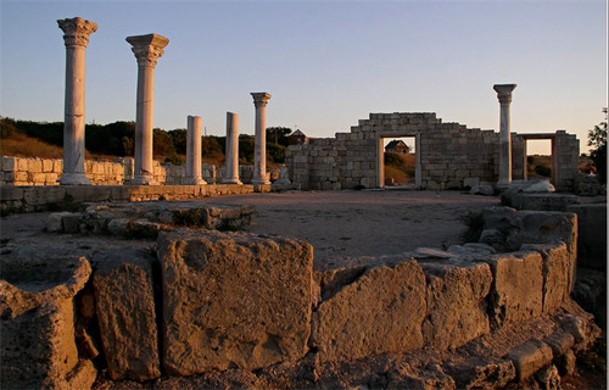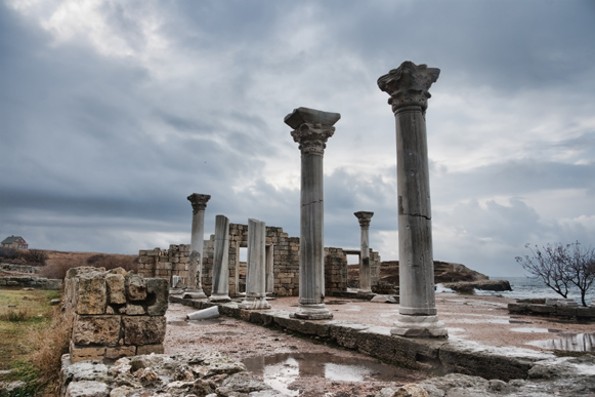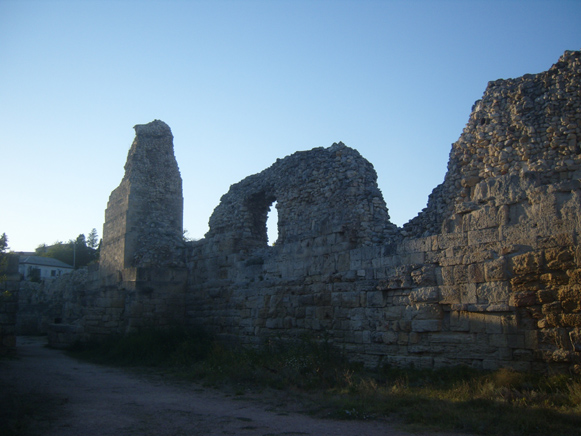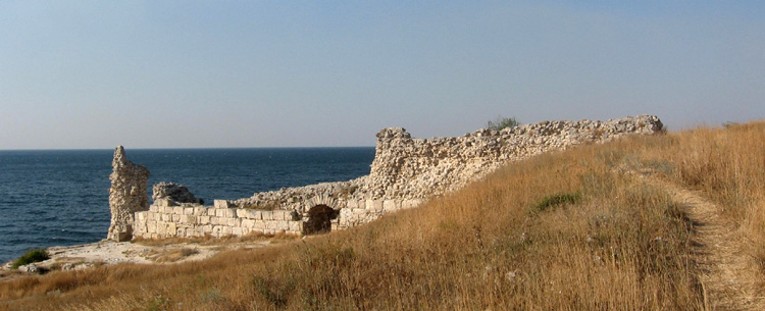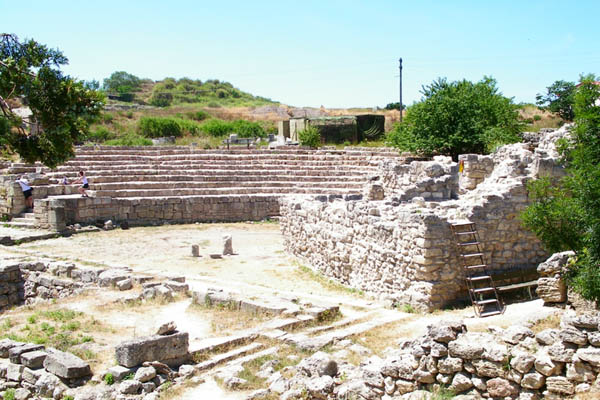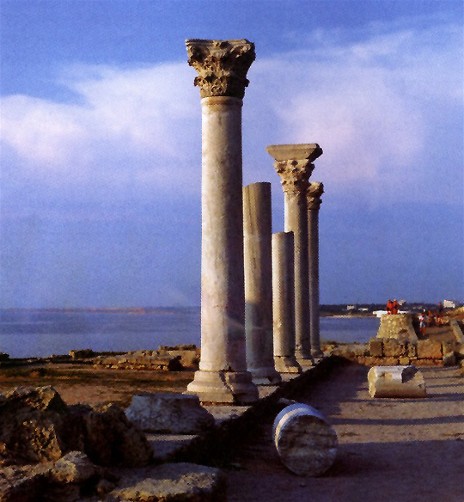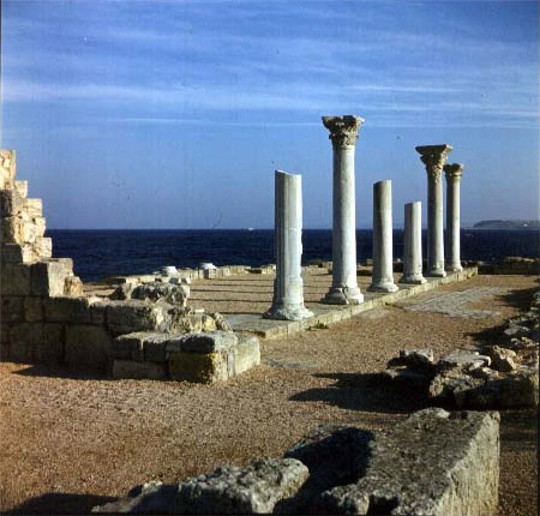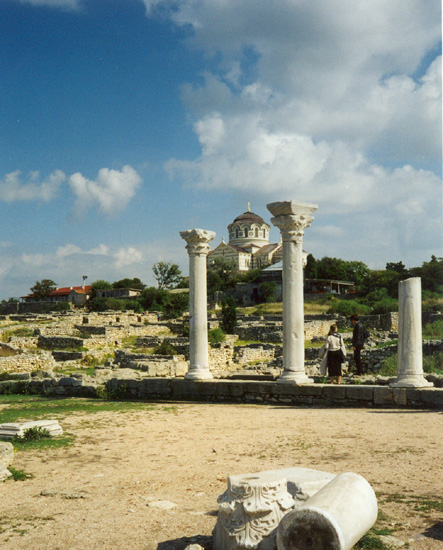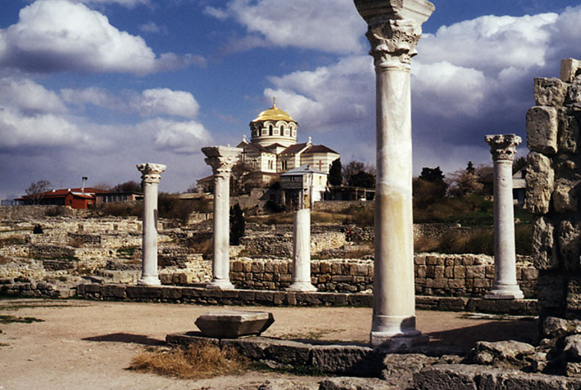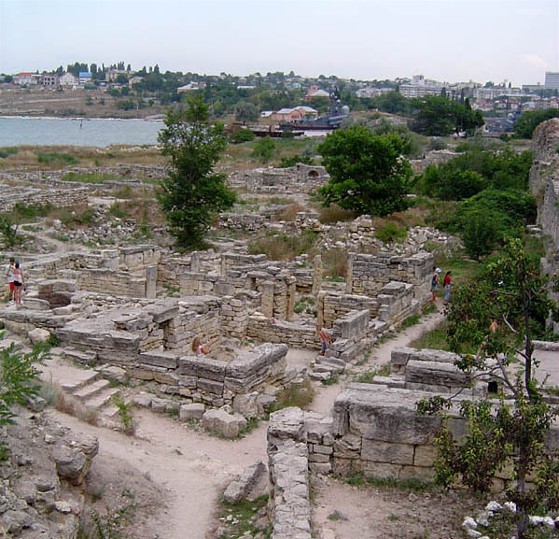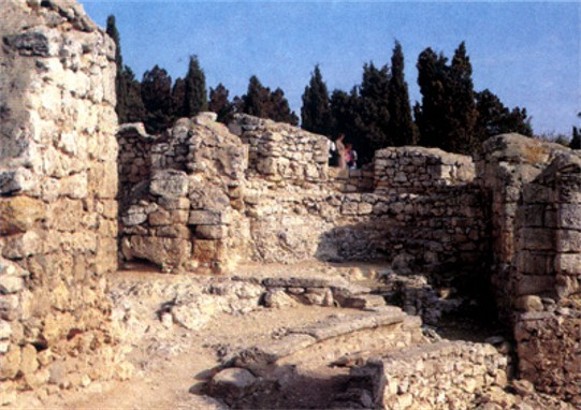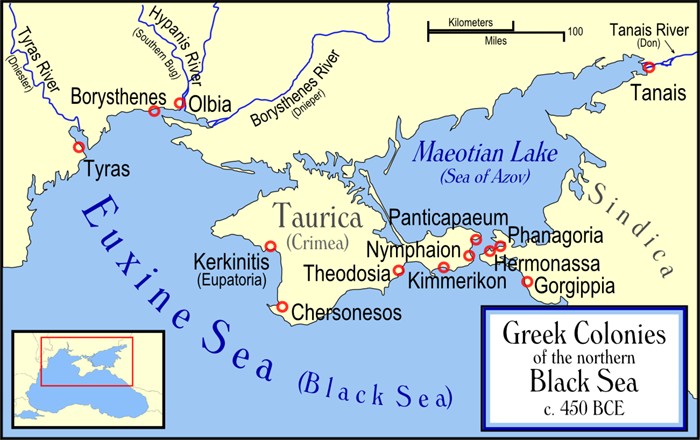Chersonese Taurica
Chersonese Taurica or Chersonesus [Херсонес Таврійський, Khersones Tavriiskyi] (known as Херсон [Kherson] in the Middle Ages and as Корсун [Korsun] in Slavic sources). (Map: Greek colonies on northern Black Sea coast.) Ancient Greek city and city-state in the southwestern part of the Crimea, near present-day Sevastopol. The city was established in 422–21 BC by Megarian Greek colonists from Heraclea Pontica, a city on the southern coast of the Black Sea. In ancient times the city of Chersonese was an important manufacturing and trade center as well as the political center of a city-state that encompassed the southwestern coast of the Crimea. The city flourished in the 4th–2nd century BC. It had a democratic system of government and coined its own money. Its economy was based on viticulture, fishing, manufacturing, and trade (grain, cattle, fish) with other Greek cities, the Scythians, and the Taurians. In the 1st century BC Chersonese recognized the sovereignty of Prince Mithradates VI of the Bosporan Kingdom and, later, of Rome. At the end of the 4th century AD the city became part of the Byzantine Empire. In the 5th–11th century it was the largest city on the northern coast of the Black Sea and an important center of Byzantine culture. At the end of the 10th century Chersonese was captured and held briefly by the Kyivan prince Volodymyr the Great. From that point on Byzantine cultural influences often entered Kyivan Rus’ through Chersonese. At the beginning of the 13th century, when Constantinople was captured by the Crusaders, Chersonese came under the protection of the Trabzon (Trebizond) Empire. In the second half of the century the city suffered a rapid decline as Genoa established a trade monopoly on the Black Sea. The Tatars sacked the city in 1299 and at the end of the 14th century, bringing about its depopulation.
The remaining ruins and the site of the former city were studied and excavated many times, beginning in 1827 (by K. Kostiushko-Valiuzhynych) and systematically from 1876 (by R. Lener, K. Hrynevych, G. Belov, A. Yakobson, and others).
Chersonese covered an area of up to 40 ha. Excavations uncovered the remains of Greek, Roman, and Byzantine city walls, residential blocks with rectilinear streets, homes with rainwater reservoirs, workshops, over 50 Christian churches, palaces, a theater seating over 3,000 people, etc. The graves outside the city walls contained a rich inventory of ancient artifacts. (See also Khersones Tavriiskyi National Preserve.)
BIBLIOGRAPHY
Shestakov, S. Ocherki po istorii Khersonesa v VI–X vekakh po r. Khr. (Moscow 1908)
Khersonskii sbornik, nos 1-2 (Sevastopol 1926–30)
Belov, G. Khersones Tavricheskii (Leningrad 1948)
Iakobson, A. Srednevekovyi Khersones XII–XIV vv. (Moscow–Leningrad 1950)
Piatysheva, N. Iuvelirnye izdeliia Khersonesa (Moscow 1956)
Kadeev, V. Ocherki istorii ekonomiki Khersonesa Tavricheskogo v I–IV v. n.e. (Kharkiv 1970)
———. Khersones Tavricheskii v pervykh vekakh nashei ery (Kharkiv 1981)
Carter, J.C. Crimean Chersonesos: City, Chora, Museum, and Environs (Austin, TX 2003)
Myroslav Labunka
[This article originally appeared in the Encyclopedia of Ukraine, vol. 1 (1984).]
.jpg)
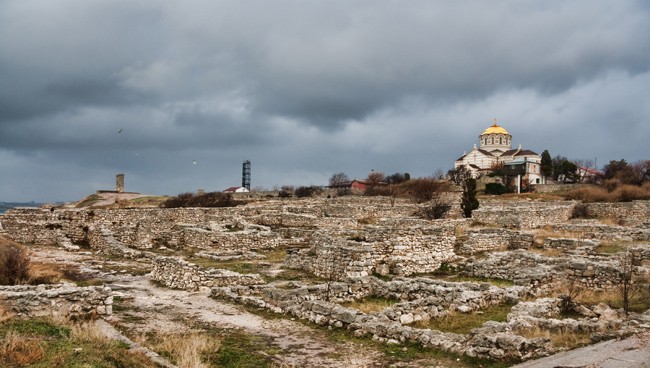
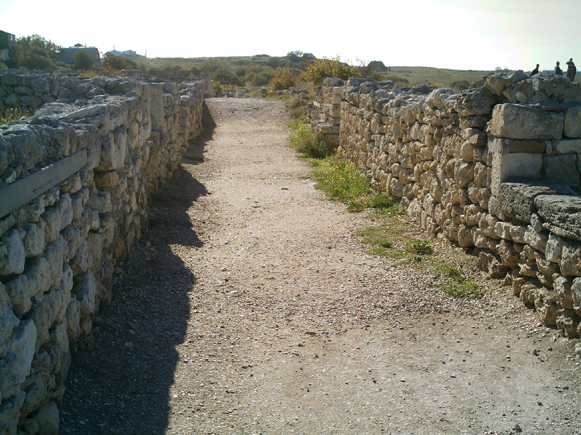
.jpg)

.jpg)
